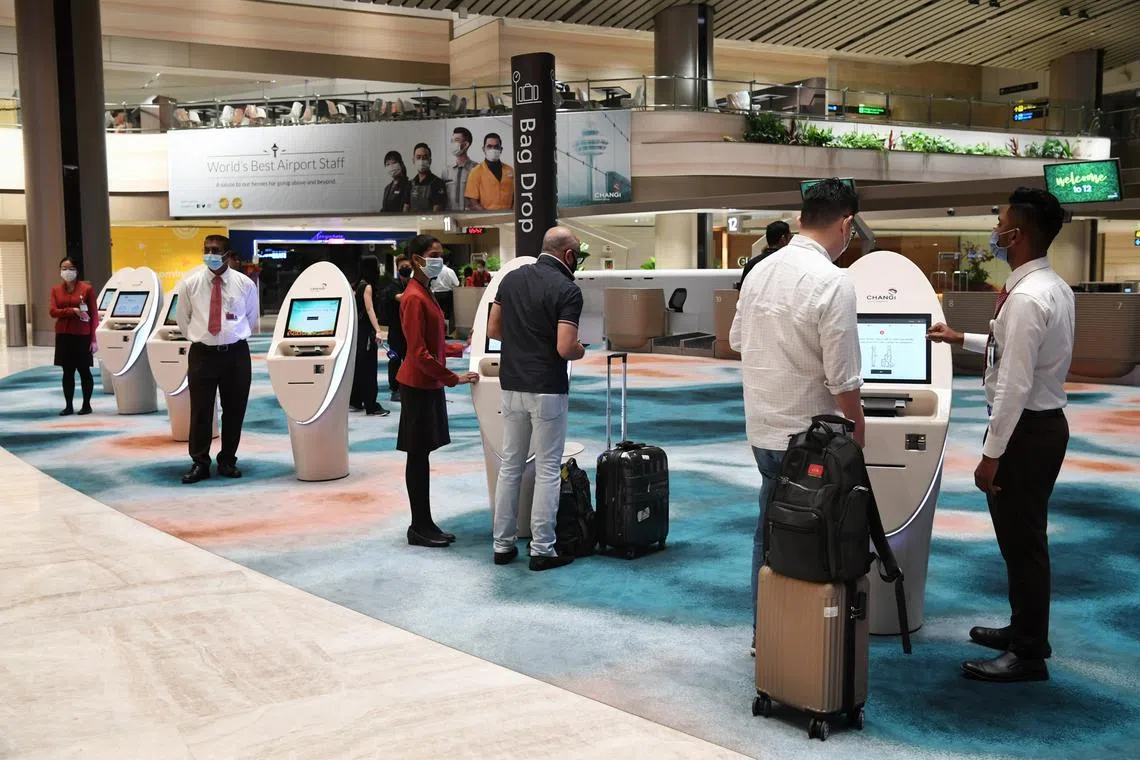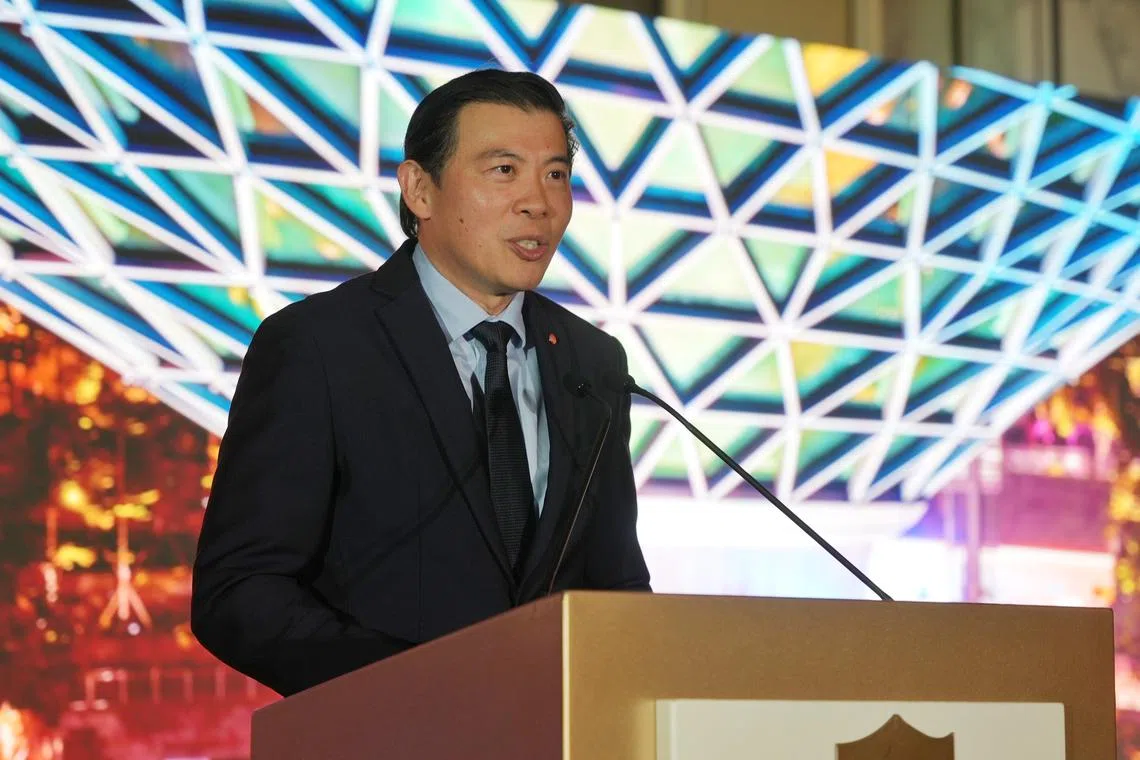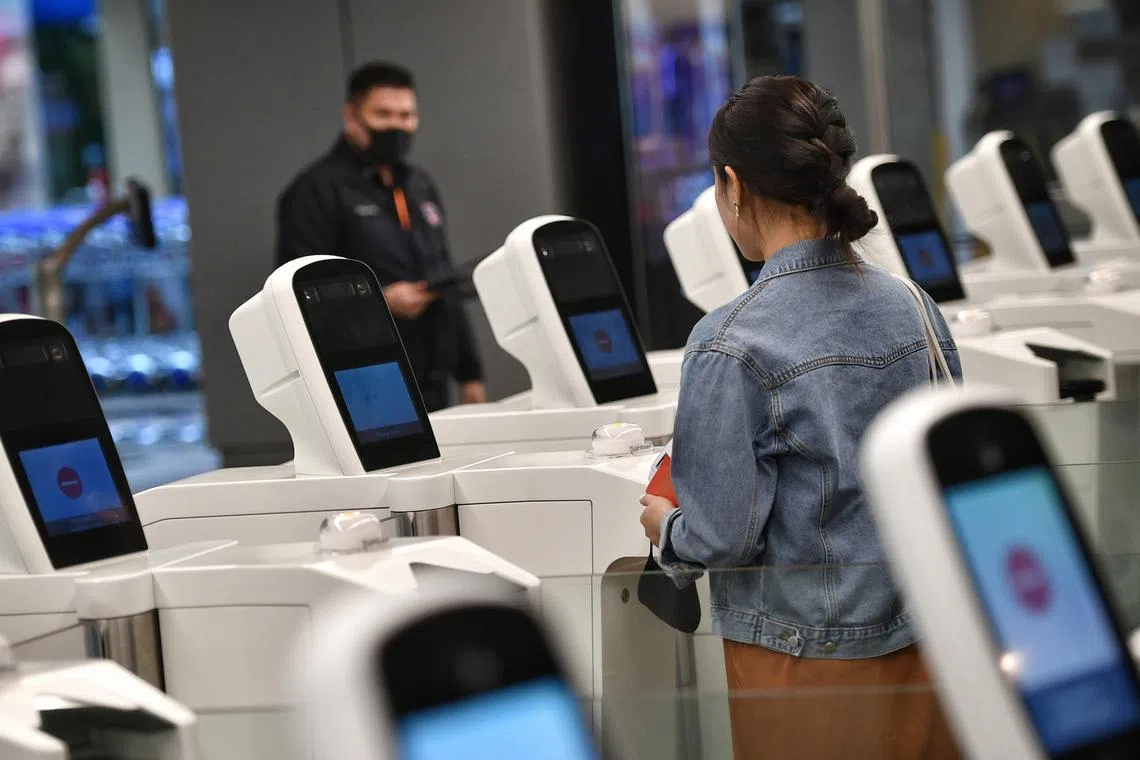Changi Airport Terminal 2 to reopen fully in October, months ahead of schedule
Sign up now: Get ST's newsletters delivered to your inbox

The full reopening of Changi Airport Terminal 2 comes amid anticipation of a full travel recovery in 2024 or earlier.
PHOTO: ST FILE
Follow topic:
SINGAPORE - The northern wing of Changi Airport Terminal 2 will reopen in October, several months ahead of schedule.
This will complete the terminal’s reopening, and take T2’s handling capacity to 28 million passengers a year, up from 23 million before the terminal was closed in May 2020 for upgrading amid the Covid-19 pandemic.
Changi Airport’s total handling capacity will increase to 90 million passengers a year, up from 85 million. It currently has a capacity of around 70 million passengers annually.
Announcing the development on Wednesday at the 2023 Changi Airline Awards ceremony held at the Shangri-La hotel, Transport Minister S. Iswaran said travellers can look forward to new amenities and innovative retail and food and beverage offerings at the refreshed northern wing.
“These additions will further enhance the distinctive Changi travel experience,” he said.
Mr Iswaran added: “As we rebuild to pre-Covid-19 traffic volumes, we are working hard to ensure that Changi has both the physical and operational capacity to support the increase in flights and passengers.”
T2 had reopened in phases from May 2022 the entire southern wing was reopened
While the upgrading of the northern wing of the terminal was slated to be completed in 2024, there have been signs that the work was progressing at a faster pace than expected, with some Singapore Airlines flights departing from Gates E1, E2 and E3 – part of T2’s northern wing – in late March.
The full reopening of T2 comes amid anticipation of a full travel recovery in 2024 or earlier
According to the latest statistics from Changi Airport Group (CAG), passenger traffic at the airport has continued to grow steadily in the first quarter of 2023.
In March, Changi Airport handled 4.63 million passenger movements, more than 82 per cent of pre-Covid-19 levels.
Aircraft movements, which include landings and take-offs, totalled 26,000, about 81 per cent of March 2019 levels.
For the first three months of 2023, Changi Airport clocked 13 million passenger movements, with 74,000 aircraft movements registered over the same period.
In comparison, a total of 68.3 million passengers passed through Changi Airport in 2019, before Covid-19 struck, with 382,000 commercial flights taking off or landing.
CAG said on Wednesday that as at April 1, 102 airlines operate more than 6,000 weekly scheduled flights connecting Singapore to 145 cities in 49 countries and territories worldwide.
This is up from last December, when 95 airlines operated more than 5,500 weekly scheduled flights at the airport, with connections to 140 cities worldwide.
CAG said Changi has continued to see strong performance across key source markets, with the strongest growth in North America, the south-west Pacific and Europe.
Passenger flows to and from China, Hong Kong, Taiwan and Macau also showed strong recovery, with traffic doubling in the first quarter of 2023, compared with the fourth quarter of 2022. This was driven by the progressive resumption of scheduled passenger services, CAG noted.
At Wednesday’s award ceremony, CAG chief executive Lee Seow Hiang said the last mile of Changi Airport’s recovery will be increasingly challenging due to new “frictions”.
Aircraft availability is a key concern, he said, with the delivery of new planes delayed and airlines facing difficulties putting stored aircraft back into service.
He also flagged structural changes to travel behaviour, with some companies reducing business travel

CAG chief executive Lee Seow Hiang speaking at the 2023 Changi Airline Awards ceremony on May 3.
PHOTO: LIANHE ZAOBAO
Mr Lee added that capacity at Changi Airport will be tight until the opening of Terminal 5
Tenders for the construction of T5 will be called in 2024, with ground-breaking slated for 2025.
“We will need to explore new ways to unlock more capacity now and invest in our next phase of growth,” he said.
To that end, plans are afoot to give the two arrival immigration halls at Terminal 1 a facelift so that passengers landing in Singapore will be able to clear immigration more quickly and in more spacious surroundings.
The number of automated lanes at each immigration hall will be increased from 12 to more than 40.
When completed in 2025, the expanded arrival halls in T1 will have 60 per cent more capacity and 40 per cent more throughput, said Mr Lee.
T1, which can handle 24 million passengers a year, was last upgraded in September 2019 at a cost of $323 million.

The number of automated lanes at each immigration hall at T1 will be increased from 12 to over 40.
PHOTO: ST FILE
CAG is also increasing airside capacity.
There will be four new bus gates at T2 by the end of 2023, and around 30 more aircraft parking stands built over the next seven years.
Mr Lee said Changi Airport’s JetQuay terminal, which caters to commercially important people, will be transformed into a premium travel hub by 2025.
When completed, the upgraded terminal will have a refreshed interior, 20 per cent larger lounge space, new private suites and shopping concierge offerings, he added.
Meanwhile, trials allowing travellers to fly out of Changi Airport without needing to present their passports are expected to start at Terminal 3 in June, with airlines to get on board progressively.
On the air cargo front, CAG said demand has remained soft, especially in the first two months of 2023, amid global economic uncertainty and inflationary pressures.
As a result, airfreight movements at Changi Airport fell 9 per cent year on year in the first quarter of 2023 to 417,000 tonnes.
CAG gave out 24 awards across six categories to 16 airlines on Wednesday, with Singapore Airlines (SIA) named Partner of the Year.
Said an SIA spokesman: “We are committed to supporting the growth of the Singapore air hub, and expanding Singapore’s network connectivity for the benefit of our customers.”


